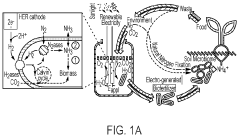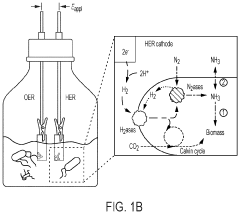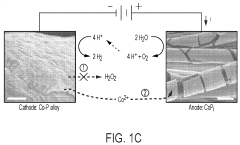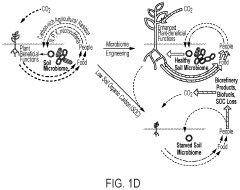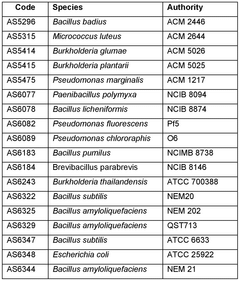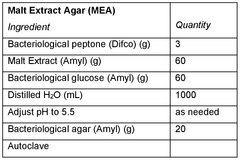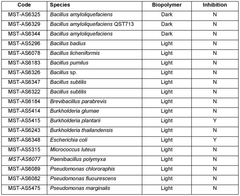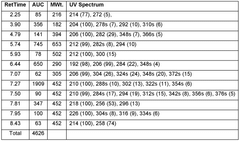Biofertilizers: Unveiling Strategies for Accelerated Plant Metabolism
JUL 15, 20259 MIN READ
Generate Your Research Report Instantly with AI Agent
Patsnap Eureka helps you evaluate technical feasibility & market potential.
Biofertilizer Evolution
The evolution of biofertilizers represents a significant shift in agricultural practices, moving from traditional chemical fertilizers to more sustainable and environmentally friendly alternatives. This progression can be traced back to the early 20th century when the concept of using microorganisms to enhance plant growth was first introduced. However, it wasn't until the latter half of the century that biofertilizers gained substantial attention as a viable solution for sustainable agriculture.
In the 1950s and 1960s, researchers began to explore the potential of nitrogen-fixing bacteria, such as Rhizobium, in improving soil fertility. This marked the beginning of modern biofertilizer development. The 1970s saw an increased focus on phosphate-solubilizing microorganisms, expanding the range of nutrients that could be made more accessible to plants through microbial activity.
The 1980s and 1990s witnessed a surge in research and development of various types of biofertilizers, including those based on mycorrhizal fungi and plant growth-promoting rhizobacteria (PGPR). This period also saw the first commercial production and distribution of biofertilizers, albeit on a limited scale.
The turn of the millennium brought about a renewed interest in biofertilizers, driven by growing environmental concerns and the need for sustainable agricultural practices. Advancements in biotechnology and microbiology led to the development of more efficient and targeted biofertilizer formulations. The concept of consortium biofertilizers, which combine multiple beneficial microorganisms, gained traction during this period.
In recent years, the evolution of biofertilizers has been characterized by a focus on enhancing their efficacy and stability. Nanotechnology has been employed to improve the delivery and performance of biofertilizers. Additionally, there has been a shift towards developing region-specific and crop-specific biofertilizer formulations to maximize their effectiveness under various environmental conditions.
The latest frontier in biofertilizer evolution involves the integration of genetic engineering and synthetic biology. Researchers are exploring ways to enhance the capabilities of beneficial microorganisms through genetic modification, potentially creating super-strains that can significantly boost plant metabolism and nutrient uptake.
As we look to the future, the evolution of biofertilizers is likely to continue along the path of increased sophistication and customization. The integration of artificial intelligence and machine learning in biofertilizer development and application is expected to open new avenues for optimizing plant-microbe interactions and accelerating plant metabolism.
In the 1950s and 1960s, researchers began to explore the potential of nitrogen-fixing bacteria, such as Rhizobium, in improving soil fertility. This marked the beginning of modern biofertilizer development. The 1970s saw an increased focus on phosphate-solubilizing microorganisms, expanding the range of nutrients that could be made more accessible to plants through microbial activity.
The 1980s and 1990s witnessed a surge in research and development of various types of biofertilizers, including those based on mycorrhizal fungi and plant growth-promoting rhizobacteria (PGPR). This period also saw the first commercial production and distribution of biofertilizers, albeit on a limited scale.
The turn of the millennium brought about a renewed interest in biofertilizers, driven by growing environmental concerns and the need for sustainable agricultural practices. Advancements in biotechnology and microbiology led to the development of more efficient and targeted biofertilizer formulations. The concept of consortium biofertilizers, which combine multiple beneficial microorganisms, gained traction during this period.
In recent years, the evolution of biofertilizers has been characterized by a focus on enhancing their efficacy and stability. Nanotechnology has been employed to improve the delivery and performance of biofertilizers. Additionally, there has been a shift towards developing region-specific and crop-specific biofertilizer formulations to maximize their effectiveness under various environmental conditions.
The latest frontier in biofertilizer evolution involves the integration of genetic engineering and synthetic biology. Researchers are exploring ways to enhance the capabilities of beneficial microorganisms through genetic modification, potentially creating super-strains that can significantly boost plant metabolism and nutrient uptake.
As we look to the future, the evolution of biofertilizers is likely to continue along the path of increased sophistication and customization. The integration of artificial intelligence and machine learning in biofertilizer development and application is expected to open new avenues for optimizing plant-microbe interactions and accelerating plant metabolism.
Market Demand Analysis
The market demand for biofertilizers has been experiencing significant growth in recent years, driven by increasing awareness of sustainable agricultural practices and the need for environmentally friendly alternatives to chemical fertilizers. The global biofertilizer market is projected to expand rapidly, with a compound annual growth rate (CAGR) exceeding 10% over the next five years. This growth is primarily attributed to the rising adoption of organic farming methods and the growing emphasis on soil health and crop productivity.
Several key factors are contributing to the increasing market demand for biofertilizers. Firstly, there is a growing consumer preference for organic produce, which has led to a surge in organic farming practices worldwide. This shift has created a substantial demand for biofertilizers as essential inputs in organic agriculture. Additionally, government initiatives promoting sustainable agriculture and environmental conservation have further boosted the adoption of biofertilizers in both developed and developing countries.
The agricultural sector's focus on improving crop yields while minimizing environmental impact has also played a crucial role in driving the demand for biofertilizers. As farmers seek to enhance soil fertility and plant nutrition without relying heavily on synthetic chemicals, biofertilizers have emerged as a viable solution. The ability of biofertilizers to accelerate plant metabolism and improve nutrient uptake efficiency has made them particularly attractive to farmers looking to optimize their crop production.
Market trends indicate a growing interest in biofertilizers that can address specific crop needs and soil conditions. Customized biofertilizer formulations tailored to different crops and geographical regions are gaining traction among farmers. Moreover, the integration of biofertilizers with precision agriculture technologies is opening up new opportunities for market growth, as it allows for more targeted and efficient application of these biological products.
The Asia-Pacific region is expected to dominate the biofertilizer market, driven by the large agricultural sectors in countries like India and China. North America and Europe are also witnessing substantial growth in biofertilizer adoption, particularly in organic farming and high-value crop production. Emerging markets in Latin America and Africa are showing increasing potential for biofertilizer use, as these regions seek to improve agricultural productivity while preserving soil health.
Despite the positive market outlook, challenges such as limited awareness among small-scale farmers and the need for proper storage and application techniques remain. Addressing these challenges through education and technological advancements will be crucial for realizing the full market potential of biofertilizers. As research continues to unveil new strategies for accelerating plant metabolism through biofertilizers, the market is poised for further expansion and innovation in the coming years.
Several key factors are contributing to the increasing market demand for biofertilizers. Firstly, there is a growing consumer preference for organic produce, which has led to a surge in organic farming practices worldwide. This shift has created a substantial demand for biofertilizers as essential inputs in organic agriculture. Additionally, government initiatives promoting sustainable agriculture and environmental conservation have further boosted the adoption of biofertilizers in both developed and developing countries.
The agricultural sector's focus on improving crop yields while minimizing environmental impact has also played a crucial role in driving the demand for biofertilizers. As farmers seek to enhance soil fertility and plant nutrition without relying heavily on synthetic chemicals, biofertilizers have emerged as a viable solution. The ability of biofertilizers to accelerate plant metabolism and improve nutrient uptake efficiency has made them particularly attractive to farmers looking to optimize their crop production.
Market trends indicate a growing interest in biofertilizers that can address specific crop needs and soil conditions. Customized biofertilizer formulations tailored to different crops and geographical regions are gaining traction among farmers. Moreover, the integration of biofertilizers with precision agriculture technologies is opening up new opportunities for market growth, as it allows for more targeted and efficient application of these biological products.
The Asia-Pacific region is expected to dominate the biofertilizer market, driven by the large agricultural sectors in countries like India and China. North America and Europe are also witnessing substantial growth in biofertilizer adoption, particularly in organic farming and high-value crop production. Emerging markets in Latin America and Africa are showing increasing potential for biofertilizer use, as these regions seek to improve agricultural productivity while preserving soil health.
Despite the positive market outlook, challenges such as limited awareness among small-scale farmers and the need for proper storage and application techniques remain. Addressing these challenges through education and technological advancements will be crucial for realizing the full market potential of biofertilizers. As research continues to unveil new strategies for accelerating plant metabolism through biofertilizers, the market is poised for further expansion and innovation in the coming years.
Technical Challenges
Despite the promising potential of biofertilizers in accelerating plant metabolism, several technical challenges hinder their widespread adoption and effectiveness. One of the primary obstacles is the limited shelf life of microbial-based biofertilizers. These products often contain living organisms that are sensitive to environmental factors such as temperature, humidity, and pH. Maintaining the viability and efficacy of these microorganisms during storage, transportation, and application poses significant challenges for manufacturers and farmers alike.
Another critical challenge is the inconsistent performance of biofertilizers across different soil types and environmental conditions. The efficacy of these products can vary greatly depending on factors such as soil composition, climate, and existing microbial communities. This variability makes it difficult to predict and guarantee consistent results, which is crucial for large-scale agricultural applications.
The formulation of biofertilizers presents another technical hurdle. Developing stable and effective formulations that can deliver the active ingredients to the plant roots efficiently while protecting them from environmental stressors is a complex task. This challenge is compounded by the need to create formulations that are compatible with existing agricultural practices and equipment.
Furthermore, the scalability of biofertilizer production remains a significant technical challenge. Many effective strains of beneficial microorganisms are difficult to mass-produce while maintaining their desired traits and efficacy. This limitation often results in higher production costs and limited availability of high-quality biofertilizers.
The lack of standardized quality control measures and regulations for biofertilizers also presents a technical challenge. Without consistent standards, it becomes difficult to ensure product quality, efficacy, and safety across different manufacturers and regions. This lack of standardization can lead to subpar products entering the market, potentially undermining farmer trust and adoption rates.
Additionally, the complex interactions between biofertilizers and the plant rhizosphere are not fully understood. The mechanisms by which these products accelerate plant metabolism can vary depending on the specific microorganisms involved and the plant species. This knowledge gap makes it challenging to optimize biofertilizer formulations and application strategies for maximum effectiveness.
Lastly, the integration of biofertilizers with existing agricultural practices and chemical inputs presents technical challenges. Many conventional farming systems rely heavily on synthetic fertilizers and pesticides, which can potentially interfere with or inhibit the beneficial effects of biofertilizers. Developing strategies to harmonize biofertilizer use with conventional agricultural practices without compromising their effectiveness is a crucial technical challenge that needs to be addressed.
Another critical challenge is the inconsistent performance of biofertilizers across different soil types and environmental conditions. The efficacy of these products can vary greatly depending on factors such as soil composition, climate, and existing microbial communities. This variability makes it difficult to predict and guarantee consistent results, which is crucial for large-scale agricultural applications.
The formulation of biofertilizers presents another technical hurdle. Developing stable and effective formulations that can deliver the active ingredients to the plant roots efficiently while protecting them from environmental stressors is a complex task. This challenge is compounded by the need to create formulations that are compatible with existing agricultural practices and equipment.
Furthermore, the scalability of biofertilizer production remains a significant technical challenge. Many effective strains of beneficial microorganisms are difficult to mass-produce while maintaining their desired traits and efficacy. This limitation often results in higher production costs and limited availability of high-quality biofertilizers.
The lack of standardized quality control measures and regulations for biofertilizers also presents a technical challenge. Without consistent standards, it becomes difficult to ensure product quality, efficacy, and safety across different manufacturers and regions. This lack of standardization can lead to subpar products entering the market, potentially undermining farmer trust and adoption rates.
Additionally, the complex interactions between biofertilizers and the plant rhizosphere are not fully understood. The mechanisms by which these products accelerate plant metabolism can vary depending on the specific microorganisms involved and the plant species. This knowledge gap makes it challenging to optimize biofertilizer formulations and application strategies for maximum effectiveness.
Lastly, the integration of biofertilizers with existing agricultural practices and chemical inputs presents technical challenges. Many conventional farming systems rely heavily on synthetic fertilizers and pesticides, which can potentially interfere with or inhibit the beneficial effects of biofertilizers. Developing strategies to harmonize biofertilizer use with conventional agricultural practices without compromising their effectiveness is a crucial technical challenge that needs to be addressed.
Current Solutions
01 Microbial biofertilizers for enhancing plant metabolism
Microbial biofertilizers, including bacteria and fungi, are used to enhance plant metabolism and growth. These microorganisms can improve nutrient uptake, stimulate plant hormone production, and increase overall plant health. They are applied to seeds, soil, or plant surfaces to promote sustainable agriculture and reduce chemical fertilizer use.- Microbial biofertilizers for enhancing plant metabolism: Microbial biofertilizers, including bacteria and fungi, are used to enhance plant metabolism and growth. These microorganisms can improve nutrient uptake, stimulate plant hormone production, and increase overall plant health. They are applied to seeds, soil, or plant surfaces to promote sustainable agriculture and reduce chemical fertilizer use.
- Plant growth-promoting rhizobacteria (PGPR) for metabolic enhancement: Plant growth-promoting rhizobacteria (PGPR) are specific types of biofertilizers that colonize the rhizosphere and enhance plant metabolism. These beneficial bacteria can improve nutrient solubilization, nitrogen fixation, and phytohormone production, leading to increased plant growth and yield. PGPR can also help plants tolerate environmental stresses.
- Algae-based biofertilizers for improved plant metabolism: Algae-based biofertilizers are used to enhance plant metabolism and growth. These biofertilizers contain various beneficial compounds, including nutrients, growth hormones, and bioactive molecules that can stimulate plant metabolic processes. They can improve soil fertility, increase nutrient uptake, and enhance overall plant health and productivity.
- Enzyme-based biofertilizers for metabolic enhancement: Enzyme-based biofertilizers contain specific enzymes that can enhance plant metabolic processes. These enzymes can improve nutrient availability, increase nutrient uptake efficiency, and stimulate various metabolic pathways in plants. They can be applied to soil or directly to plants to promote growth, yield, and overall plant health.
- Biofertilizers with secondary metabolite production: Some biofertilizers are designed to enhance the production of secondary metabolites in plants. These biofertilizers can stimulate the biosynthesis of valuable compounds such as antioxidants, flavonoids, and other bioactive molecules. By influencing plant metabolism, these biofertilizers can improve the nutritional quality and medicinal properties of crops.
02 Plant growth-promoting rhizobacteria (PGPR) for metabolic enhancement
Plant growth-promoting rhizobacteria (PGPR) are specific types of biofertilizers that colonize the plant root zone. These beneficial bacteria enhance plant metabolism by fixing nitrogen, solubilizing phosphorus, producing phytohormones, and inducing systemic resistance against pathogens. PGPR application can lead to improved crop yields and stress tolerance.Expand Specific Solutions03 Algae-based biofertilizers for metabolic improvement
Algae-based biofertilizers, including microalgae and cyanobacteria, are used to enhance plant metabolism. These organisms can fix nitrogen, produce growth-promoting substances, and improve soil structure. Algal biofertilizers can increase nutrient availability, enhance photosynthetic efficiency, and stimulate overall plant growth and development.Expand Specific Solutions04 Biofertilizers with metabolite-producing microorganisms
Certain biofertilizers contain microorganisms that produce beneficial metabolites for plants. These metabolites can include amino acids, vitamins, enzymes, and organic acids that directly or indirectly enhance plant metabolism. Such biofertilizers can improve nutrient absorption, stress tolerance, and overall plant health by providing essential compounds that support various metabolic processes.Expand Specific Solutions05 Formulation techniques for biofertilizers to optimize plant metabolism
Advanced formulation techniques are employed to optimize the effectiveness of biofertilizers in enhancing plant metabolism. These may include encapsulation methods, carrier selection, and the addition of protective agents or synergistic compounds. Proper formulation can improve the survival and efficacy of beneficial microorganisms, ensuring sustained metabolic benefits to plants over extended periods.Expand Specific Solutions
Industry Leaders
The biofertilizer market is in a growth phase, driven by increasing demand for sustainable agriculture practices. The global market size is projected to expand significantly, with estimates ranging from $3-4 billion by 2026. Technologically, biofertilizers are advancing rapidly, with companies like Bayer CropScience, BASF Plant Science, and Verdesian Life Sciences leading innovation. Academic institutions such as China Agricultural University and Nanjing Agricultural University are contributing to research and development. The technology is maturing, but there's still room for improvement in efficacy and application methods. Collaborations between industry and academia are accelerating progress, with companies like Pioneer Hi-Bred International and Resonac Corp partnering with research institutions to develop novel biofertilizer solutions.
Bayer CropScience LP
Technical Solution: Bayer CropScience LP has developed a comprehensive biofertilizer strategy centered on enhancing plant metabolism through microbial and biochemical approaches. Their flagship product line includes nitrogen-fixing bacteria for legumes and non-legumes, phosphate-solubilizing microorganisms, and potassium-mobilizing bacteria[4]. Bayer's biofertilizers also incorporate mycorrhizal fungi to improve nutrient and water uptake. The company has invested in advanced formulation technologies, such as microencapsulation and liquid suspensions, to improve the stability and efficacy of their microbial products[5]. Additionally, Bayer has developed biostimulants containing seaweed extracts and amino acids to directly enhance plant metabolic processes and stress tolerance[6].
Strengths: Strong research capabilities, extensive field testing network, and integration with digital farming solutions. Weaknesses: Potential challenges in scaling up production and ensuring consistent performance across diverse environmental conditions.
Verdesian Life Sciences LLC
Technical Solution: Verdesian Life Sciences LLC has developed a comprehensive portfolio of biofertilizers and biostimulants aimed at enhancing plant metabolism and nutrient use efficiency. Their approach focuses on improving nutrient uptake and utilization through innovative formulations and delivery systems. Verdesian's technology includes polymer-based nutrient management products that optimize the release of nutrients in sync with plant demand[10]. They have also developed microbial inoculants containing nitrogen-fixing and phosphate-solubilizing bacteria to enhance nutrient availability in the rhizosphere[11]. Additionally, Verdesian has invested in the development of bio-based enzyme technologies that catalyze the conversion of organic matter into plant-available nutrients, thereby accelerating nutrient cycling in the soil[12].
Strengths: Diverse product portfolio, focus on nutrient use efficiency, and strong partnerships with academic institutions. Weaknesses: Potential challenges in product differentiation in a competitive market and the need for region-specific formulations.
Key Innovations
Biofertilizer and methods of making and using same
PatentPendingUS20200102254A1
Innovation
- A bioreactor system that couples hydrogen generation from electricity-dependent water splitting with the nitrogen-fixing capabilities of autotrophic microorganisms like Xanthobacter autotrophicus to produce ammonia-enriched biomass, which can be used as a biofertilizer, enabling sustainable and selective ammonia production by inhibiting glutamine synthetase to divert ammonia production extracellularly.
Combination of microbes for use in agriculture
PatentWO2024197354A1
Innovation
- A synergistic pairing of coprophilous fungi, such as Zopfiella sp., with Bacillus amyloliquefaciens, which induces the production of pigmented biopolymers and metabolites, enhancing plant growth, stress tolerance, and biofertilizer properties, thereby promoting plant growth and reducing biotic and abiotic stresses.
Environmental Impact
The environmental impact of biofertilizers in accelerating plant metabolism is a crucial aspect to consider in sustainable agriculture. These microbial-based fertilizers offer significant advantages over conventional chemical fertilizers in terms of ecological sustainability and long-term soil health.
Biofertilizers contribute to reduced greenhouse gas emissions by decreasing the need for synthetic fertilizers, which are energy-intensive to produce and transport. The production of chemical fertilizers is responsible for a substantial portion of agricultural carbon emissions, and the shift towards biofertilizers can help mitigate this environmental burden.
Furthermore, biofertilizers play a vital role in improving soil structure and fertility. By enhancing the soil's microbial diversity, they promote better nutrient cycling and organic matter decomposition. This leads to increased soil water retention capacity and reduced soil erosion, which are critical factors in combating desertification and maintaining ecosystem balance.
The use of biofertilizers also helps in reducing water pollution caused by chemical runoff. Unlike synthetic fertilizers, which can leach into groundwater and surface water bodies, biofertilizers have a lower risk of nutrient leaching. This characteristic is particularly important in preventing eutrophication of water ecosystems and protecting aquatic biodiversity.
Biofertilizers contribute to the restoration of degraded soils by promoting the growth of beneficial microorganisms. These microbes can help in the bioremediation of contaminated soils, breaking down pollutants and improving overall soil health. This aspect is crucial in reclaiming land affected by intensive agricultural practices or industrial pollution.
The application of biofertilizers can lead to a reduction in pesticide use. By enhancing plant immunity and promoting overall plant health, biofertilizers make crops more resistant to pests and diseases. This indirect effect contributes to a decrease in the environmental impact associated with pesticide production and application.
In the context of climate change, biofertilizers can play a role in carbon sequestration. By promoting plant growth and increasing biomass production, they indirectly contribute to enhanced carbon capture in plant tissues and soil organic matter. This aspect aligns with global efforts to mitigate climate change through natural carbon sinks.
However, it is important to note that the environmental impact of biofertilizers can vary depending on the specific microbial strains used and the application methods. Proper management and application techniques are crucial to maximize their benefits while minimizing potential negative impacts on local ecosystems.
Biofertilizers contribute to reduced greenhouse gas emissions by decreasing the need for synthetic fertilizers, which are energy-intensive to produce and transport. The production of chemical fertilizers is responsible for a substantial portion of agricultural carbon emissions, and the shift towards biofertilizers can help mitigate this environmental burden.
Furthermore, biofertilizers play a vital role in improving soil structure and fertility. By enhancing the soil's microbial diversity, they promote better nutrient cycling and organic matter decomposition. This leads to increased soil water retention capacity and reduced soil erosion, which are critical factors in combating desertification and maintaining ecosystem balance.
The use of biofertilizers also helps in reducing water pollution caused by chemical runoff. Unlike synthetic fertilizers, which can leach into groundwater and surface water bodies, biofertilizers have a lower risk of nutrient leaching. This characteristic is particularly important in preventing eutrophication of water ecosystems and protecting aquatic biodiversity.
Biofertilizers contribute to the restoration of degraded soils by promoting the growth of beneficial microorganisms. These microbes can help in the bioremediation of contaminated soils, breaking down pollutants and improving overall soil health. This aspect is crucial in reclaiming land affected by intensive agricultural practices or industrial pollution.
The application of biofertilizers can lead to a reduction in pesticide use. By enhancing plant immunity and promoting overall plant health, biofertilizers make crops more resistant to pests and diseases. This indirect effect contributes to a decrease in the environmental impact associated with pesticide production and application.
In the context of climate change, biofertilizers can play a role in carbon sequestration. By promoting plant growth and increasing biomass production, they indirectly contribute to enhanced carbon capture in plant tissues and soil organic matter. This aspect aligns with global efforts to mitigate climate change through natural carbon sinks.
However, it is important to note that the environmental impact of biofertilizers can vary depending on the specific microbial strains used and the application methods. Proper management and application techniques are crucial to maximize their benefits while minimizing potential negative impacts on local ecosystems.
Regulatory Framework
The regulatory framework surrounding biofertilizers plays a crucial role in shaping their development, production, and application in agriculture. As the demand for sustainable agricultural practices grows, governments and international organizations are increasingly recognizing the importance of establishing comprehensive guidelines for biofertilizer use.
At the national level, many countries have implemented specific regulations to govern the registration, quality control, and marketing of biofertilizers. These regulations often include requirements for product labeling, efficacy testing, and safety assessments. For instance, in India, the Fertilizer Control Order (FCO) has been amended to include provisions for biofertilizers, setting standards for their production and distribution.
The European Union has established a regulatory framework for biofertilizers under the EU Fertilizing Products Regulation (EU) 2019/1009. This regulation aims to harmonize the rules for biofertilizers across member states, ensuring product safety and efficacy while promoting innovation in the sector. It introduces new product categories and quality criteria for biofertilizers, facilitating their market access within the EU.
In the United States, the regulatory landscape for biofertilizers is more complex, with oversight shared between the Environmental Protection Agency (EPA) and the Department of Agriculture (USDA). The EPA regulates biofertilizers under the Federal Insecticide, Fungicide, and Rodenticide Act (FIFRA) if they contain living microorganisms, while the USDA oversees organic certification for biofertilizers used in organic farming.
Internationally, organizations such as the Food and Agriculture Organization (FAO) of the United Nations have developed guidelines for the production and use of biofertilizers. These guidelines aim to promote best practices and standardization across different countries, particularly in developing regions where regulatory frameworks may be less established.
One of the key challenges in regulating biofertilizers is the need to balance innovation and safety. As new strains of microorganisms and novel formulations are developed to enhance plant metabolism, regulatory bodies must adapt their frameworks to accommodate these advancements while ensuring environmental and human safety.
The regulatory landscape also addresses the environmental impact of biofertilizers. Many countries have incorporated sustainability criteria into their regulations, encouraging the development of biofertilizers that not only enhance plant growth but also contribute to soil health and ecosystem balance.
As research in biofertilizers continues to unveil new strategies for accelerating plant metabolism, regulatory frameworks will need to evolve accordingly. This may include the development of more specific guidelines for different types of biofertilizers, as well as the establishment of international standards to facilitate global trade and adoption of these sustainable agricultural inputs.
At the national level, many countries have implemented specific regulations to govern the registration, quality control, and marketing of biofertilizers. These regulations often include requirements for product labeling, efficacy testing, and safety assessments. For instance, in India, the Fertilizer Control Order (FCO) has been amended to include provisions for biofertilizers, setting standards for their production and distribution.
The European Union has established a regulatory framework for biofertilizers under the EU Fertilizing Products Regulation (EU) 2019/1009. This regulation aims to harmonize the rules for biofertilizers across member states, ensuring product safety and efficacy while promoting innovation in the sector. It introduces new product categories and quality criteria for biofertilizers, facilitating their market access within the EU.
In the United States, the regulatory landscape for biofertilizers is more complex, with oversight shared between the Environmental Protection Agency (EPA) and the Department of Agriculture (USDA). The EPA regulates biofertilizers under the Federal Insecticide, Fungicide, and Rodenticide Act (FIFRA) if they contain living microorganisms, while the USDA oversees organic certification for biofertilizers used in organic farming.
Internationally, organizations such as the Food and Agriculture Organization (FAO) of the United Nations have developed guidelines for the production and use of biofertilizers. These guidelines aim to promote best practices and standardization across different countries, particularly in developing regions where regulatory frameworks may be less established.
One of the key challenges in regulating biofertilizers is the need to balance innovation and safety. As new strains of microorganisms and novel formulations are developed to enhance plant metabolism, regulatory bodies must adapt their frameworks to accommodate these advancements while ensuring environmental and human safety.
The regulatory landscape also addresses the environmental impact of biofertilizers. Many countries have incorporated sustainability criteria into their regulations, encouraging the development of biofertilizers that not only enhance plant growth but also contribute to soil health and ecosystem balance.
As research in biofertilizers continues to unveil new strategies for accelerating plant metabolism, regulatory frameworks will need to evolve accordingly. This may include the development of more specific guidelines for different types of biofertilizers, as well as the establishment of international standards to facilitate global trade and adoption of these sustainable agricultural inputs.
Unlock deeper insights with Patsnap Eureka Quick Research — get a full tech report to explore trends and direct your research. Try now!
Generate Your Research Report Instantly with AI Agent
Supercharge your innovation with Patsnap Eureka AI Agent Platform!
